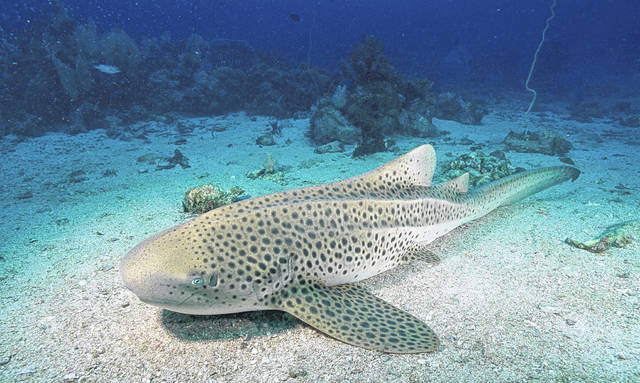
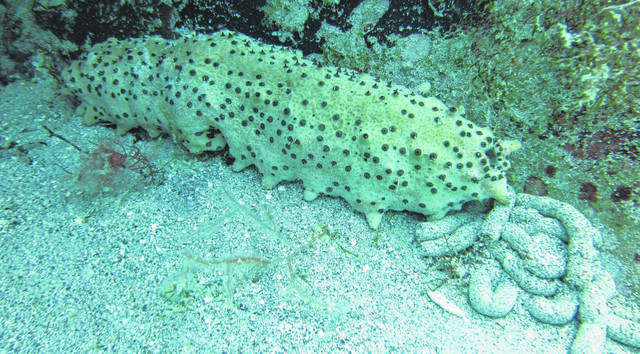
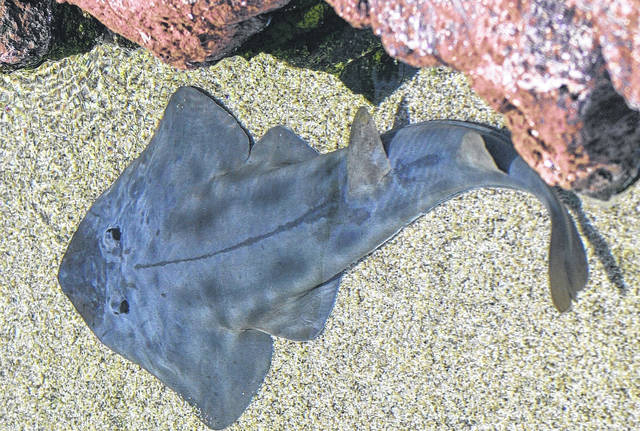
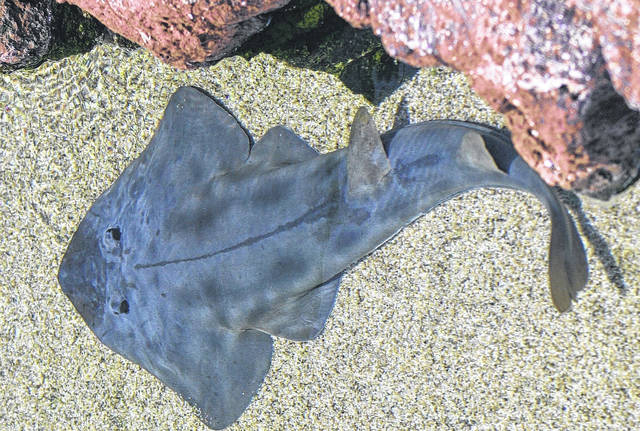
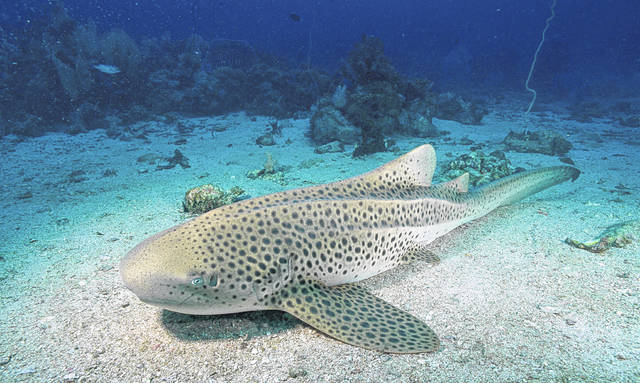
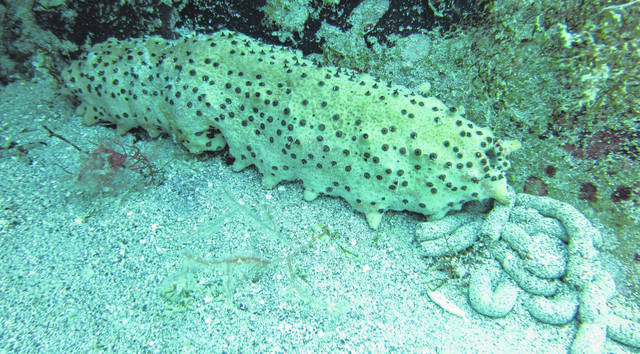
GREENVILLE — Patrons of the Darke County Parks were treated to a real-time streaming video presentation by workers at the Great Barrier Reef last week.
The Great Barrier Reef is the world’s largest coral reef system, composed of nearly 3,000 individual reefs and 900 islands stretching over 1,400 miles along the northeastern coast of Australia. A coral reef is an underwater ecosystem made up of calcium structures secreted by sea creatures called corals.
Ryan Ramasamy and Craig McGrogan, Education Officers for Reef HQ, and Education Coordinator Joanna Curtis hosted the presentation, with McGrogan and Ramasamy, in scuba gear, actually transmitting from inside an open-air aquarium adjacent to the reef. The presenters introduced park patrons to a number of different species that call the reef home, including the leopard shark, a small, spotted predator that lies on the bottom of the ocean in order to stalk its prey; and sea cucumbers, inanimate creatures whose waste helps protect the waters around the reef from high acid levels caused by global warming.
Naturalist Kathi McQueen was responsible for bringing the Reef HQ experience to Darke County. McQueen visited the reef while completing her master’s degree in zoology at Miami University.
“Ever since then I’ve really wanted to bring the reef to Ohio,” McQueen said. “I’m glad Darke County has given me the opportunity to do that.”
McQueen’s love of sea life led her to pursue a career as a naturalist in the first place.
“I’ve always been really passionate about the ocean, and I don’t think people understand the impact we still have on the ocean, even though it’s so far away,” McQueen said.
As McQueen and the Reef HQ presenters explained, pollution and energy overuse in Ohio contributes to rising sea temperatures all over the world, temperatures that threaten to damage the reef.
“When we went out to the reef, you could see the parts that were dying,” McQueen said. “You could see the beauty fading, because there were still parts that were alive and vibrant, right alongside the parts that were dead. And it makes you think about what you can do to help.”
McQueen said that the reef plays a vital role in helping researchers understand the state of the ocean as a whole, as well was what needs to be done to take care of it.
“It’s the largest living reef in the world,” McQueen said. “It’s monitored very closely, and the scientists who study it on a daily basis are able to see the changes happen in real time. And that tells them a lot about what we need to do to keep the ocean healthy.”
More than anything, McQueen said, she and her colleagues want to share their love of the sea with others.
“We just really want people to love the ocean,” McQueen said. “And in order to love it, you have to know it.”
The person McQueen most wants to share her love of the ocean with is her own young daughter, whom she fears may not get the chance to enjoy the reef the way she has.
“I want my daughter to be able to see the reef, and if we don’t do something, it may not be there,” McQueen said.







